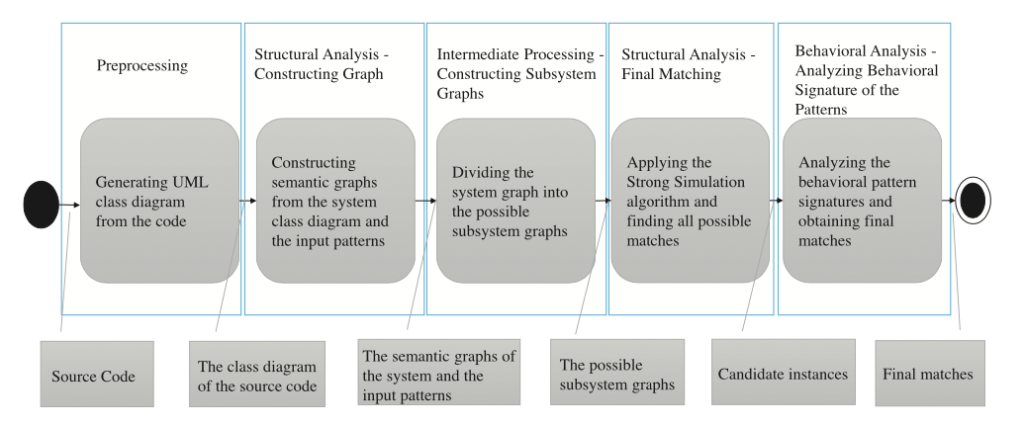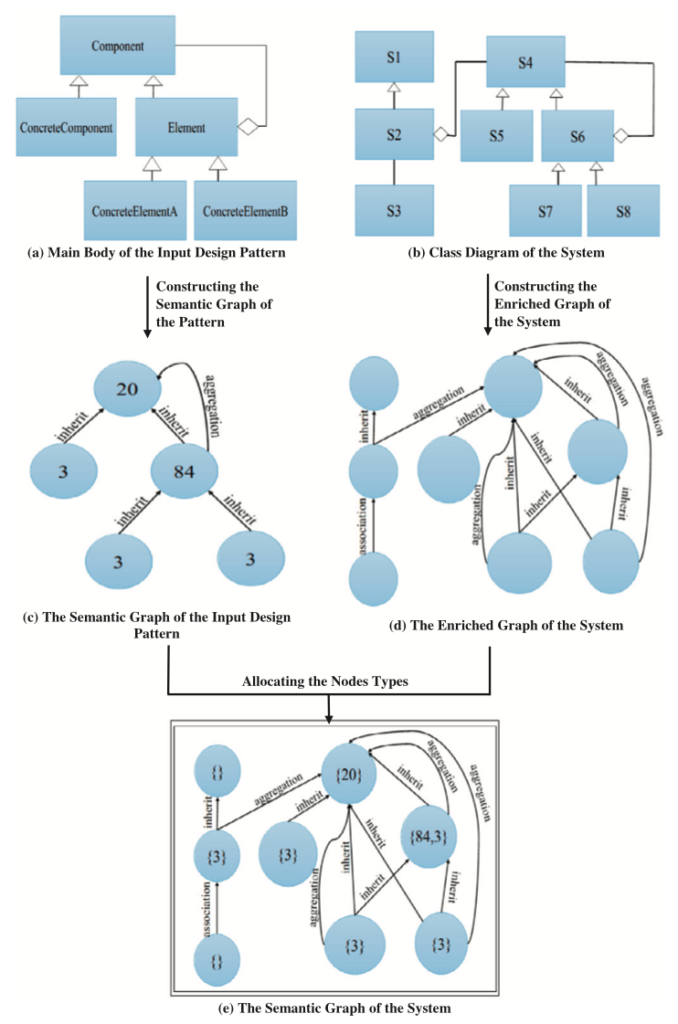Design pattern is one of the important things we learn in computer science. In real-world software architecture – particularly large and complex systems – detecting and understanding design patterns can be a challenge. And it can be crucial to know such information during large scale refactoring or system redesign.
This paper classified existing design pattern detection methods into 8 categories by approaches and 4 categories by properties. They then showed their approach, which consists of 5 steps: preprocess, constructing graphs, constructing subsystem graphs, final matching and analyzing behaviours.

The part that particularly relates to this course is step 2 which is graph operations intensive. After the program gets a UML diagram from step 1. Along with a pre-defined table specifying common design patterns, the algorithm generates nodes and edges and assigns a distinct weight to each edge representing its type. (Algorithm 1, Table 1) The algorithm later also employs a graph enriching process to expose more design patterns.

Finally, to test their model, they applied their technique on three open-source projects: JHotDraw, JRefactory and JUnit. For most design patterns, it achieved precision and recall rates of 100%, outperformed some of the other methods they mentioned for comparison (nrp, Sempatrec, DeMIMA, SSA).

Reference: Design pattern detection based on the graph theory, Bahareh B. Mayvan el., 2017 https://doi.org/10.1016/j.knosys.2017.01.007